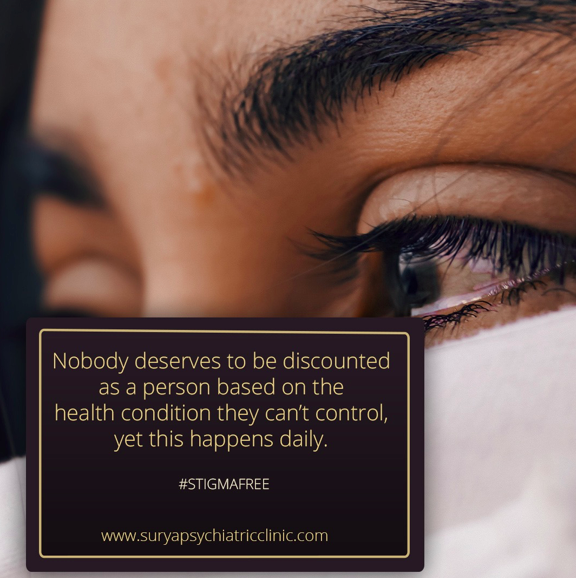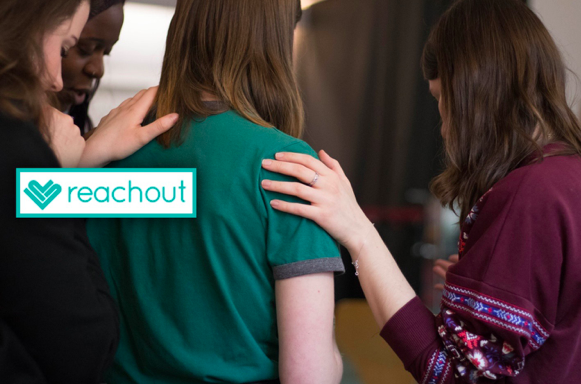
Depression is more than just being sad.
You can’t just “snap out of it” or “shake it off”…it’s a complex medical condition deeply rooted in biological and psychosocial changes. In fact, major depressive disorder is a crippling disease that affects more than 16 million adults.
Depression can present itself in many ways. Feelings of despair, numbness, worthlessness and hopelessness can leave weigh heavy on those who suffer. But, the diagnosis of major depressive disorder is also not an end-all diagnosis. There is hope and it starts with understanding.
Here’s a closer look at the most common misconceptions surrounding major depressive disorder.
According to the latest data published by the National Institute of Mental Health, major depressive disorder has become the leading cause of impairment and disability, affecting 17.3 million adults in the United States. This number represents 7.1% of all U.S. adults who encountered at least one major depressive episode. Sadly, some studies show that about 35% of those suffering did not receive any treatment. (NIMH, 2019.)
These statistics also help shine some light on issues like the lack of access to adequate care, proper diagnosis, and available treatment options.
A Life-Threatening Condition Swept Under The Rug
Obviously, major depressive disorder is a severe condition, yet so many are not properly diagnosed and treated. Lack of treatment can diminish your quality of life. Each recurrent depressive episode eats away at your ability to work …to socialize… to live.
It’s a condition that can pull people into the deepest pits of sadness and despair. The stigma surrounding mental illness only adds to the problem. A stigma fueled by misunderstanding and lack of compassion makes it difficult for those suffering to address and treat their mental illness.

Nobody deserves to be discounted as a person based on the health condition they can’t control, yet this happens daily. #StigmaFree
Here are the most common and, usually, most damaging myths about depression and the major depressive disorders:
A major depressive disorder is far more than sadness or weakness
Even though depression can have multiple forms and vary in intensity, it is never a sign of personal weakness. A depressive episode is also not a transient feeling of boredom, low mood or dissatisfaction with a current life situation.
The myth that depression is somehow a sign of personal weakness is very harmful. A person who once was able to function daily and complete tasks, now might not be unable to leave their bed or take a shower.
A new mother who becomes suicidal shortly after the childbirth is not a bad mom.
This aren’t examples of weakness or laziness…they’re symptoms of major depressive disorder.
When faced with a loved one who displays symptoms similar to these people tend to offer perhaps well-intentioned, but counterproductive advice to “snap out of it” or “just be your old self!” The burden of guilt and shame depressed people feel when they compare their current life state with memories of how they were able to function before their symptoms took hold can really weight people down.
Major depressive disorder is also different from sadness and grief. Sadness comes after emotionally intense events such as the death of a loved one, tragedy or a natural disaster is a normal reaction to loss. The grieving process lasts; however long it takes the person to come to terms with the loss, but it still has a different quality than depression. However, only trained and qualified psychiatrists and psychologists are adequately equipped to assess and understand this difference.
A major depressive disorder is not a “one size fits all” condition
Not everyone diagnosed with MDD experiences the same set of symptoms or in the same intensity. Even though it is easier for us to generalize and label people so we can “understand” them easier, psychiatrists differentiate between mild, moderate or severe depressive episodes.
While some people diagnosed with MDD experience only one depressive episode, which consists of two weeks or more of persistent depressed mood marked with some or all of the following major depressive disorder symptoms:
- Feelings of hopelessness, guilt, self-blame,
- Marked loss of interest in activities and interactions with other people one used to enjoy
- Loss of energy and feeling tired all the time
- Sleep changes – either insomnia or hypersomnia
- Changes in appetite – either loss of appetite or overeating
- Suicidal thoughts and attempts at own life
Anxiety is frequently mixed in as do physical symptoms such as varying aches and pains, frequent headaches or stomach upset.
Alongside the intensity of the current symptoms, the professional assessment of the depression also takes into account the events that preceded the symptoms, as in, for example, the childbirth that can be linked to the onset of Postpartum Depression. Severely traumatic events can also be behind the current symptoms, in some cases.
Recurrent or chronic depression that is a major depressive disorder with more or less ongoing depressive episodes across the span of two years or more (also known as persistent depressive disorder) is the most severe and most incapacitating form of MDD that changes the quality of life of the affected person, sometimes permanently.
There Are More Depression Treatments Than You May Know
The first-line treatment for MDD is usually psychotherapy, an antidepressant, or a combination of both. And, even though there is plenty of misinformation surrounding this type of therapy, too, antidepressants are so far, our first line of help. But medications and therapy don’t work for everyone.
In fact, up to one-third of patients don’t respond from traditional, first-line treatment options. So, where do you turn when traditional treatments don’t work?
Deep transcranial magnetic stimulation, also known as Deep TMS (dTMS) is a revolutionary treatment option for cases of treatment-resistant depression. Deep TMS (dTMS) is an in-office, FDA approved, non-drug, non-invasive treatment that stimulates the neuronal circuits in the prefrontal cortex, which is under functioning in people with MDD. This low-stress procedure administers electromagnetic pulses without any sedation or anesthesia and has proven to be effective in 3 out of 4 patients, within 4-6 weeks of treatment.
FDA-approved Brainsway dTMS device can only be found at Dr. Patel’s office in Tucson.
The chronic, medication-resistant major depressive disorder is not a hopeless and end-all diagnosis that it used to be. There’s renewed hope in dTMS therapy.
Major depressive disorder treatments help, but there are no simple solutions
The years of research and practice in treating the major depressive disorder, despite all the progress made, unveil a sad but real fact: there are no clear-cut and straightforward answers when it comes to treating and managing a chronic depression.
The professional treatment and consistent therapeutic help create a basis for one to be able to function in everyday life, the long-term strategy for managing chronic depression has to rely on integrative practices that empower the affected person to re-build own capacities to cope with the symptoms.
Many people with major depressive episodes in the past lead productive and satisfying lives. Mindfulness, acceptance, meditation, and self-care are the most powerful tools for this task. However, only a well-trained, experienced team of psychiatrists and psychologists can address each symptom and offer adequate treatment options tailored specifically to each patient’s needs.
The major depressive disorder requires professional help as much as, if not more, any other health condition would. If you broke your ankle, you wouldn’t hesitate to see a doctor for relief and full restoration. The same should be true about your mental health.

It is easier to manage major depressive disorder with MDD support groups
A major depressive episode, especially when it is severe and recurrent, wreaks havoc on one’s interpersonal relationships. The long-term lack of interest in socializing and simply the lack of energy to participate in social events can lead to progressive isolation.
In turn, the isolation creates a self-feeding cycle of feeling lonely, hopeless and feeling unloved. Loneliness alone contributes to a higher incidence of depressive symptoms, and people who are already affected by chronic MDD tend to suffer the most.
Other people hold a unique healing power in that they can support and inspire each other. Sharing advice on how to manage daily tasks when they seem impossible or just leaving a caring message is something major depressive disorder support groups do exceptionally well.
Knowing other people are facing the same challenges can help create a sense of community that can be motivating and supportive.
If you’ve tried antidepressants to no avail, there are still options available that can transform your life and restore your ability to enjoy all life has to offer.
For dTMS information contact: Surya Psychiatric Clinic
Join the reachout mental health community
